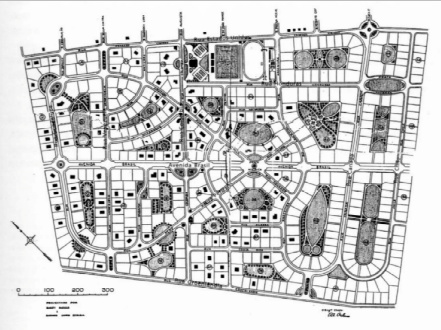The Jardim América and Pacaembu Garden Suburbs: Facing the Changes to the Metropolis of São Paulo
Maria Cristina Silva Leme, R. Monteiro

Image: The first plan of Jardim America drawn by Barry Parker. In Cia CITY Archives
Abstract
The original garden city concept was split between Howard’s original (which took form in the first garden city Letchworth in 1904) and the garden suburb of Hampstead in 1907 (Miller 2014). The idea of the city as a whole with multiple functions, which on a regional level sought to bring city and country closer while preventing uncontrolled urban sprawl, changed into the notion of city growth being embraced by the creation of residential areas beyond the existing built up area, without imposing a limit on urban expansion. The formal aspects of the garden city idea first arrived in Brazil through the work of English architect Barry Parker, responsible with Raymond Unwin for the project for the first English Garden City, Letchworth. Parker lived in São Paulo from 1917 to 1919, where he was commissioned by the English real estate company City of São Paulo Improvements and Freehold Land (CSPIFL) to develop a series of garden suburb projects for estates that served as a model for other urban settlements in São Paulo.
This chapter revisits two of Parker’s most important projects, Jardim America and Pacaembu their impact on the city of São Paulo, and the strategies made by the residents, architects, and urban planners to guarantee the preservation of their original characteristics and their permanence.
Leme, M. C. S. and C. R. Monteiro. The Jardim América and Pacaembu Garden Suburbs: Facing the Changes to the Metropolis of São Paulo. Vol. 1, in Iconic Planned Communities and the Challenge of Change, edited by M. C. Sies, I. Gournay and R. Freestone, 200-. Penn Press, 2019.
